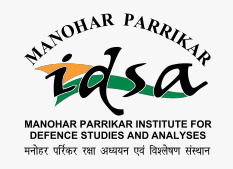India must join US, Japan and Australia to contain China’s adventurism
March 31, 2016
Speaking at the Raisina Dialogue earlier this month, Admiral Harry Harris, Commander-in-Chief, US Pacific Command, called for quadrilateral Australia-India-Japan-US consultations for peace and stability in the Indo-Pacific region. He said, “Together, we can develop a roadmap that leverages our respective efforts to improve the security architecture and strengthen regional dialogues. Together, we can ensure free and open sea lanes of communication…”
Harris also announced that the next set of naval exercises in the trilateral annual Malabar series, comprising India, Japan and the US, will be held in the northern Philippine Sea, close to the South China Sea. The Chinese perceive such efforts as attempts to gang up on them and, therefore, their reaction was fast and furious. A spokesperson of China’s foreign ministry said, “We urge the US government to put some restraint on them (US commanders) and stop them from irresponsible sensationalism and hyping up so as to avoid undermining regional peace and stability.”
China senses the emergence of a security vacuum in the Indo-Pacific and is rushing to fill it. Beijing has discarded Deng Xiaoping’s 24-character strategy to “hide our capacity and bide our time”. It has dropped the phrase “peaceful rise” while referring to its economic growth and military assertiveness.
China has deep internal fault lines. Its rapid economic growth, now slowing, has been uneven and non-inclusive. There is a deep sense of resentment of the Communist Party for the denial of basic freedoms. The discontent could boil over and lead to an uncontrollable spontaneous implosion. David Shambaugh, a well-known China scholar, is among those in the China-may-implode school. The recent crash of Chinese stock markets and their continuing volatility point to the possibility of a meltdown.
Most Asian leaders are apprehensive of China’s intentions and worry that it may behave irresponsibly somewhere in the Indo-Pacific. It could decide to intervene militarily in the South China Sea, or to occupy one or more of the disputed Senkaku/ Diaoyu islands or decide to resolve the remaining territorial disputes, like that with India, by using military force. Though President Xi Jinping has denied plans to ‘militarise’ the South China Sea, surely China is not building air strips there to fly in Japanese tourists.
Both the contingencies — implosion and military adventurism — have a low probability of occurrence, but will be high impact events with widespread ramifications should either of them come to pass. In such an eventuality, India and the US will both need strong partners to deal with the fallout and to manage the consequences. Hence, the India-US strategic partnership makes eminent sense as a hedging strategy.
India must join the US and other strategic partners, such as Australia, Japan, Singapore, South Korea and Vietnam, to establish a cooperative security framework for peace and stability in the Indo-Pacific and for the security of the global commons — air space, space, cyber space and the sea-lanes of communication — to enable freedom of navigation and free flow of trade. If China is willing to join this security architecture it should be welcomed. However, it is unlikely to do so as it believes that ‘one mountain cannot contain two tigers’ and sees itself as the lone tiger on the Asian mountain.
US leaders have expressed their support for India’s emergence as a major power several times. They have said the US is committed “to help India become a major world power in the 21st century”. President Barack Obama declared in 2010 that “India is not just a rising power, it has already risen”.
The US hopes India will soon become a “net provider of security” in the region. The expectations include India joining international counter-terrorism and counter-proliferation efforts; sharing intelligence; upholding the rules and norms governing maritime trade; providing help to the littoral states to meet their security needs; helping to counter piracy and narcotics trafficking; and, continuing to taking the lead in humanitarian and disaster relief (HADR) operations in the region. All of these expectations are unexceptionable and India has been contributing extensively to achieving these common goals.
India must not hesitate to intervene militarily in conjunction with its strategic partners if its vital national interests are threatened in its area of strategic interest. This extends from the South China Sea in the east to the Horn of Africa in the west. India would prefer to intervene under a UN flag but may join a coalition of the willing in case consensus is difficult to achieve in the UN Security Council. India must develop robust tri-Service capabilities for military intervention.
Indo-US defence cooperation, a key component of the strategic partnership, must be enhanced to take it to the next higher trajectory to enable the two countries to undertake joint threat assessment; contingency planning for joint operations; sharing of intelligence; simulations and table-top exercises — besides training exercises with troops; coordination of command, control and communications; and, planning for operational deployment and logistics support. All of these activities must be undertaken in concert with India’s other strategic partners in Asia.
Only when a cooperative security framework is in place will the India-US strategic partnership realise its true potential as a force for peace and stability in the Indo-Pacific.
The article was originally published in the Hindustan Times.



